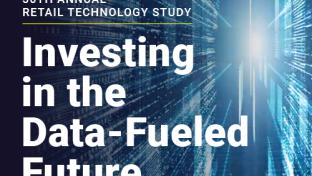Optimized Pricing in Uncertain Times
With the retail landscape in a state of uncertainty accurate and dynamic pricing capabilities are more vital than ever. Being able to price product correctly, keep margins healthy, and ensure all pricing decisions are in compliance has been thrust to the forefront.
But thanks to next-gen AI-powered pricing solutions retailers now have the available firepower to ensure all products are priced for optimal efficiency and profits. But unfortunately not every retailer has embraced these capabilities, or are not properly leveraging them for optimal efficiency.
To uncover how retailers can best put next-gen pricing capabilities to work DemandTec by Acoustic’s president, Cheryl Sullivan sat down with RIS for an exclusive Q&A on the topic.
RIS: Retailers’ adoption levels of price optimization software is on the rise. What are some of the business benefits retailers achieve with these solutions that help them thrive in today’s challenging retail environment?
Sullivan: One of the most critical elements is a solution’s ability to leverage AI-based science to quickly pick up on shifts in shopper, competitive and market behaviors that influence pricing and demand. Though the current pandemic has taken this to unprecedented levels, retailers have been trying to maneuver in an unpredictable shopper retail environment for a few years now. In addition, the growth of e-commerce, the death of long lead times and ever-changing shopper price sensitivity is requiring retailers to become far more dynamic and automated.
Price optimization creates a win/win for retailers and their shoppers, prescribing the most optimal price recommendations that help retailers achieve strategic and financial objectives while providing shoppers with prices they are comfortable paying.
RIS: In times of increased demand on key SKUs there is temptation to drastically increase prices. Why should retailers avoid this short-term strategy?
Sullivan: Laws to protect shoppers against arbitrary pricing and price gouging vary by state but typically forbid price increases of more than 10% to 20%. Your pricing software can keep you out of trouble on the compliance front.
This pales in comparison to the damage that excessive price increases can do to a retailer’s price image, and it opens the door for those shoppers to lose trust and switch permanently to a competitor. You must continually work to earn and keep the trust of your shoppers to succeed long-term. Price optimization helps retailers react to market conditions while adhering to legal and business rules, leveraging the science to create prices that are a win/win for both shoppers and retailers.
RIS: How does having predictable pricing in an unpredictable market allow retailers to win?
Sullivan: The move from long lead times to real-time business demands, a shopping journey that has moved from a single touchpoint to multiple touchpoints, and a shopper whose preferences change on a dime with unpredictable behavior causes retailers to struggle to get pricing right. Today’s uncertain times will leave their mark on shoppers and no doubt change shoppers’ views around pricing, and not just in the short run. Those who rely on gut experience and spreadsheets for pricing and forecasting will cease to exist in the new normal. Without AI pricing, retailers can’t rapidly pick up market conditions and adjust pricing to offer optimal, non-arbitrary pricing that won’t alienate already non-loyal and price sensitive shoppers. Those retailers who have adopted AI-driven pricing will survive and thrive.
RIS: What key features should retailers consider when shopping for new pricing software and what’s the next big trend they should be aware of?
Sullivan: Retailers should ensure the software is capable of moving beyond simply adhering to business rules and basic analytics and into the world of prescriptive and science. It must be dynamic and able to recommend prices for both e-commerce and brick-and-mortar stores as well as understand the dynamics between them. Retailers should select vendors who have all the critical pieces to support the full lifecycle of pricing, from everyday pricing to complex promotional process and ultimately end-of-life pricing. The solution must be aware that trade funds are a critical component requiring support, collaboration and negotiation between retailers and their suppliers. Most importantly, retailers should look for highly reputable vendors who take a collaborative and partnering approach with their customers and are willing to earn their business every day.
Pricing will continue to grow more dynamic across the entire lifecycle. The pandemic is removing the training wheels from shoppers, forcing them to embrace the online world, driving e-commerce adoption at unprecedented rates and making dynamic, omnichannel pricing critical. While AI-pricing adoption has been growing worldwide, the pace will accelerate. Retail laggards who once felt it was a nice-to-have must realize it’s a must-have to survive in a future that will always be characterized by uncertainty.






